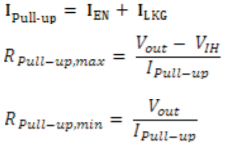Other Parts Discussed in Thread: SN74LVC1G123
Hi,
Do I need to put a pull-up resistor on the output pin[6]?
If yes what should this value?
This output is been connected into pin[2] of the "Monostable Multivibrator" (SN74LVC1G123), and the output of this Monostable is connected back to nRESET pin[5] of the INA200.
Thanks in advance?
Hemi



